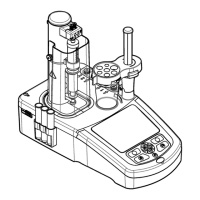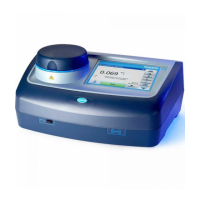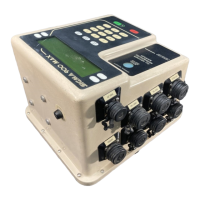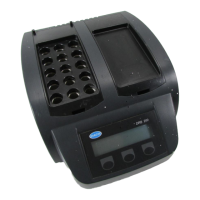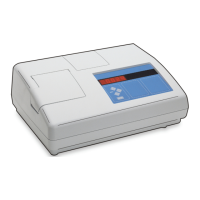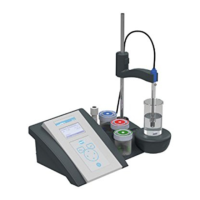Troubleshooting
50081_Troubleshooting.fm Page 141
Section 10 Troubleshooting
The following table is designed to help identify and solve various problems that may be
encountered while running the AutoCAT.
Problem
Category
Symptom Probable Cause Corrective Action
Electrical
Display does
not show up or
is too dark
No operating power
• Confirm that the power switch on the back of the instrument
has been turned ON.
• Confirm that the power cord is fully inserted into the back of
the instrument and that it is properly plugged into the wall
outlet.
• Confirm that there is power to the wall outlet.
• Verify the integrity of the fuses; change if necessary. See
Section 9.3 Replacing the Fuse on page 140.
The screen contrast or
intensity is too low.
• While in the Methods menu, press the 0 to darken, and/or 7
to lighten until the desired screen intensity and contrast
is obtained.
Mechanical
Air bubbles
trapped in the
lines
Air bubbles have
inadvertently been
trapped while trying to
install the titrant or air is
being sucked into the
system where the tubing
is connected to the
instrument.
• Verify that the inlet tube for the titrant is secure and below the
surface of the titrant solution inside the titrant bottle.
• Verify that the all the tubing connections are tight. If the
threads of tubing connection are damaged or stripped, and
cannot be properly tightened, they must be replaced.
• Select Titrants>Burette functions>Flush. Lightly tap the
tubing while the instrument is flushing to purge air bubbles
from the system.
Titrant leaks
Titrant leaks can also
occur when the burette
seals become faulty.
Titrant leaks generally
indicate that a tubing
connector has not been
properly tightened.
• Tighten the leaking tube connection. If the tube connection
has been damaged, replace the tubing.
• Verify the integrity of the burette seals. If the burette seals are
leaking, replace the burette.
Titrant doesn’t
flow through
tubing
Loose tubing connection
• Verify that the inlet tube for the titrant is secure and below the
surface of the titrant solution inside the titrant bottle.
• Verify that the all the tubing connections are tight. If the
threads of tubing connection are damaged or stripped, and
cannot be properly tightened, they must be replaced.
Tubing is connected to the
wrong ports on the rotary
valve.
• Verify that the tubing sections are connected to the correct
ports on the rotary valve, respectively. Observe the icons.
See Section 2.2 Instrument Assembly on page 15.
Data
Collection
(w/o Auto-
scaling)
The titration is
very quick and
the resolution
of the titration
curve is too
low. The
titration curve
is too noisy.
The selected volume
increment is too large.
• Decrease the volume increment. The volume increment is
user adjustable during the titration procedure.
The titration is
very slow and
there are too
many points
before the end
point.
The volume increment is
too small.
• Increase the volume increment. The volume increment is
user adjustable during the titration procedure.

